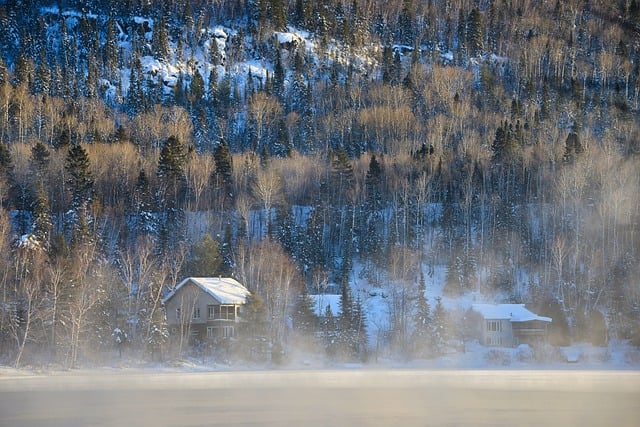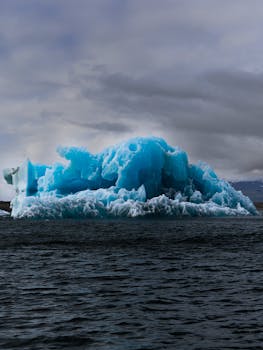-
Table of Contents for The Ultimate Guide to Cold-Weather Running Gear
- Why Cold-Weather Running Gear is Essential for Winter Workouts
- Top 10 Must-Have Items for Cold-Weather Running
- How to Layer Your Clothing for Maximum Warmth and Comfort
- The Best Running Shoes for Cold and Icy Conditions
- Choosing the Right Thermal Base Layers for Cold-Weather Running
- Essential Accessories for Cold-Weather Running: Hats, Gloves, and More
- Tips for Running Safely in the Dark and Cold
- Cold-Weather Running Gear for Different Budgets
- How to Properly Care for and Store Your Cold-Weather Running Gear
- Q&A for The Ultimate Guide to Cold-Weather Running Gear
“Stay warm, stay motivated, conquer the cold with The Ultimate Guide to Cold-Weather Running Gear.”
The Ultimate Guide to Cold-Weather Running Gear is a comprehensive resource that provides valuable information and recommendations on the essential gear needed for running in cold weather conditions. This guide covers a wide range of topics, including base layers, insulation, outerwear, accessories, and footwear, to help runners stay comfortable, safe, and motivated during winter runs. Whether you are a beginner or an experienced runner, this guide will assist you in making informed decisions when it comes to selecting the right gear for your cold-weather running needs.
Why Cold-Weather Running Gear is Essential for Winter Workouts
When the temperature drops and the days get shorter, many runners find it challenging to maintain their outdoor workout routine. However, with the right cold-weather running gear, you can continue to enjoy the benefits of running even during the winter months. In this ultimate guide, we will explore why cold-weather running gear is essential for winter workouts.
First and foremost, cold-weather running gear provides protection against the elements. As the temperature drops, your body loses heat more rapidly, making it crucial to wear clothing that can insulate and retain warmth. Layering is key when it comes to cold-weather running gear. Start with a moisture-wicking base layer that will keep sweat away from your skin and help regulate your body temperature. Over this, add a mid-layer that provides insulation, such as a fleece or a thermal long-sleeve shirt. Finally, top it off with a windproof and water-resistant outer layer to shield you from rain, snow, and wind.
In addition to keeping you warm, cold-weather running gear also helps to keep you dry. Moisture-wicking fabrics are designed to pull sweat away from your skin and onto the outer layer of the fabric, where it can evaporate more easily. This is crucial during winter workouts, as wet clothing can lead to discomfort and even hypothermia. Look for running gear made from materials such as polyester or merino wool, which are known for their moisture-wicking properties.
Another important aspect of cold-weather running gear is visibility. With shorter daylight hours and potentially adverse weather conditions, it is crucial to make yourself visible to motorists and other runners. Opt for gear that has reflective elements, such as jackets with reflective strips or shoes with reflective accents. Additionally, consider wearing a headlamp or carrying a small flashlight to improve your visibility during early morning or evening runs.
Cold-weather running gear also includes accessories that can make your winter workouts more comfortable. One essential accessory is a hat or headband that covers your ears, as a significant amount of heat is lost through the head. Gloves or mittens are also crucial to protect your hands from the cold. Look for gloves that are touchscreen-compatible, so you can still use your smartphone without having to remove them. Finally, invest in a good pair of thermal socks and running shoes with good traction to prevent slips and falls on icy or snowy surfaces.
In conclusion, cold-weather running gear is essential for winter workouts for several reasons. It provides protection against the elements, keeping you warm and dry. It also enhances your visibility, making you safer during low-light conditions. Additionally, cold-weather running gear includes accessories that can improve your comfort and prevent injuries. By investing in the right gear, you can continue to enjoy the benefits of running all year round, even when the weather is less than ideal. So, don’t let the cold stop you from hitting the pavement – gear up and keep running!
Top 10 Must-Have Items for Cold-Weather Running
When it comes to running in cold weather, having the right gear is essential. Not only does it keep you warm and comfortable, but it also helps to prevent injuries and allows you to perform at your best. With so many options available, it can be overwhelming to know where to start. That’s why we’ve put together the ultimate guide to cold-weather running gear, starting with the top 10 must-have items.
1. Base Layer: The base layer is the foundation of your cold-weather running outfit. Look for a moisture-wicking fabric that will keep you dry and comfortable throughout your run. Merino wool or synthetic materials are great options.
2. Insulated Jacket: A good insulated jacket is crucial for staying warm during those chilly winter runs. Look for one that is lightweight, breathable, and has insulation to keep you warm without overheating.
3. Thermal Tights: Thermal tights are a must-have for cold-weather running. They provide extra insulation for your legs and help to keep your muscles warm and prevent injury. Look for tights with a brushed interior for added warmth.
4. Gloves: Protecting your hands from the cold is essential. Look for gloves that are windproof and have touchscreen compatibility so you can still use your phone or smartwatch without taking them off.
5. Hat or Headband: Keeping your head warm is important for regulating your body temperature. A hat or headband made from a moisture-wicking material will help to keep sweat away from your face and ears.
6. Neck Gaiter: A neck gaiter is a versatile accessory that can be worn in multiple ways. It can be pulled up to cover your face and neck or worn as a headband or beanie. Look for one made from a breathable and moisture-wicking fabric.
7. Socks: Don’t overlook the importance of good socks for cold-weather running. Look for socks made from a moisture-wicking material that will keep your feet dry and prevent blisters. Merino wool or synthetic blends are great options.
8. Reflective Gear: With shorter daylight hours in the winter, it’s important to stay visible to drivers and other runners. Invest in reflective gear such as a vest or jacket to ensure you can be seen in low-light conditions.
9. Compression Gear: Compression gear can help to improve circulation and reduce muscle fatigue during cold-weather runs. Look for compression tights or socks that provide targeted support to key muscle groups.
10. Trail Shoes: If you plan on running on snowy or icy terrain, investing in a pair of trail shoes with extra traction is a smart move. Look for shoes with aggressive lugs and a waterproof upper to keep your feet dry and secure footing.
By investing in these top 10 must-have items for cold-weather running, you’ll be well-prepared to tackle any winter run. Remember to layer your clothing appropriately, starting with a moisture-wicking base layer and adding insulation as needed. Don’t forget to protect your extremities with gloves, a hat or headband, and a neck gaiter. Stay visible with reflective gear and consider the benefits of compression gear for improved performance. Finally, choose the right shoes for the terrain you’ll be running on. With the right gear, you can continue to enjoy running even in the coldest of temperatures.
How to Layer Your Clothing for Maximum Warmth and Comfort
When it comes to running in cold weather, proper layering is essential for both warmth and comfort. Layering your clothing allows you to adapt to changing temperatures and conditions, ensuring that you stay comfortable throughout your run. In this section, we will guide you through the process of layering your clothing for maximum warmth and comfort during cold-weather runs.
The first layer of your cold-weather running gear should be a moisture-wicking base layer. This layer is designed to keep sweat away from your skin, preventing you from feeling damp and chilled. Look for base layers made from synthetic materials like polyester or merino wool, as these fabrics are excellent at wicking away moisture. Avoid cotton, as it tends to retain moisture and can leave you feeling cold and clammy.
On top of your base layer, you’ll want to add an insulating layer. This layer is responsible for trapping heat and keeping you warm. A popular choice for an insulating layer is a lightweight fleece or a thermal long-sleeve shirt. These materials provide excellent insulation while still allowing for breathability. Consider the temperature and wind conditions when choosing the thickness of your insulating layer. If it’s particularly cold or windy, you may opt for a thicker insulating layer to provide extra warmth.
Next, it’s time to add a windproof and water-resistant outer layer. This layer is crucial for protecting you from the elements and keeping you dry. Look for a jacket or a vest that is specifically designed for running in cold weather. These garments are typically made from lightweight, breathable materials that offer both wind and water resistance. Pay attention to features like a high collar, adjustable cuffs, and a drawstring hem, as these can help seal out cold air and keep you warm.
Don’t forget about your lower body when layering for cold-weather running. Start with a pair of moisture-wicking, thermal tights or leggings as your base layer. These will provide insulation and keep your legs warm. On top of your base layer, you can add a pair of windproof and water-resistant pants. Look for pants with reflective details for added visibility during low-light conditions. If it’s particularly cold, you may also consider wearing a pair of thermal shorts or a skirt over your tights for extra warmth.
To complete your cold-weather running gear, don’t forget about your extremities. A hat or a headband is essential for keeping your head warm and preventing heat loss. Look for a hat made from a moisture-wicking material that covers your ears. Gloves or mittens are also crucial for keeping your hands warm. Opt for gloves that are touchscreen-compatible, so you can still use your smartphone without removing them. Finally, invest in a pair of thermal socks and consider wearing gaiters to protect your ankles and lower legs from the cold.
Remember, layering is all about finding the right balance between warmth and breathability. Pay attention to your body’s temperature during your runs and adjust your layers accordingly. It’s better to start a little chilly and warm up as you go than to overdress and risk overheating. With the right cold-weather running gear and proper layering, you can continue to enjoy your runs even when the temperatures drop. Stay warm, stay comfortable, and keep running!
The Best Running Shoes for Cold and Icy Conditions

Finding The Ultimate Guide to Cold-Weather Running Gear, When it comes to running in cold and icy conditions, having the right gear is essential. One of the most important pieces of gear for cold-weather running is a good pair of running shoes. These shoes not only provide comfort and support, but they also offer protection against the elements. In this section, we will discuss the best running shoes for cold and icy conditions.
First and foremost, it is important to choose a pair of running shoes that are specifically designed for winter running. These shoes are typically made with materials that are more durable and weather-resistant than regular running shoes. Look for shoes that have a waterproof or water-resistant upper to keep your feet dry in wet and snowy conditions.
In addition to being weather-resistant, the best running shoes for cold and icy conditions should also have good traction. Look for shoes that have a rubber outsole with deep lugs or a patterned tread. This will help you maintain grip on slippery surfaces, such as ice or packed snow. Some shoes even have special technologies, like microspikes or carbide studs, that provide extra traction on icy surfaces.
Another important feature to consider when choosing running shoes for cold weather is insulation. Look for shoes that have a warm lining or insulation to keep your feet warm in freezing temperatures. Some shoes even have removable liners or insoles that you can customize based on the temperature and your personal preference.
It is also worth considering the weight of the shoes. While you want a shoe that provides enough insulation and protection, you don’t want it to be too heavy and bulky. Look for shoes that strike a balance between warmth and weight, so you can run comfortably without feeling weighed down.
When it comes to specific shoe recommendations, there are several brands that are known for their cold-weather running shoes. One popular option is the Salomon Speedcross 5 GTX. These shoes have a waterproof Gore-Tex upper, aggressive lugs for traction, and a comfortable fit. They are a great choice for trail running in cold and wet conditions.
Another top pick is the Brooks Ghost 13 GTX. These shoes feature a waterproof Gore-Tex upper, a cushioned midsole for comfort, and a durable outsole for traction. They are versatile enough for both road and trail running in cold weather.
If you prefer a more minimalist shoe, the Saucony Peregrine 11 ICE+ is a great option. These shoes have a water-resistant upper, a grippy outsole with carbide studs, and a lightweight design. They are perfect for running on icy surfaces.
In conclusion, when it comes to running in cold and icy conditions, having the right gear is crucial. A good pair of running shoes is essential for comfort, support, and protection against the elements. Look for shoes that are weather-resistant, have good traction, provide insulation, and strike a balance between warmth and weight. Some recommended options include the Salomon Speedcross 5 GTX, Brooks Ghost 13 GTX, and Saucony Peregrine 11 ICE+. With the right pair of running shoes, you can confidently tackle your winter runs and stay safe and comfortable in cold and icy conditions.
Choosing the Right Thermal Base Layers for Cold-Weather Running
When it comes to cold-weather running, choosing the right thermal base layers is essential. These layers are designed to keep you warm and comfortable during your run, while also wicking away sweat to prevent you from getting too hot. With so many options available, it can be overwhelming to know where to start. That’s why we’ve put together this ultimate guide to help you choose the best thermal base layers for your cold-weather runs.
First and foremost, it’s important to understand the different types of thermal base layers available. The most common materials used for these layers are merino wool, synthetic fabrics, and a blend of the two. Merino wool is a natural fiber that is known for its excellent insulation properties and ability to regulate body temperature. Synthetic fabrics, on the other hand, are designed to wick away moisture and dry quickly. A blend of merino wool and synthetic fabrics combines the best of both worlds, offering warmth, moisture-wicking, and quick-drying capabilities.
When choosing a thermal base layer, consider the temperature and weather conditions you’ll be running in. If you’re running in extremely cold temperatures, a thicker base layer made of merino wool or a blend may be more suitable. These materials provide excellent insulation and will keep you warm even in freezing temperatures. On the other hand, if you’re running in milder cold weather, a thinner base layer made of synthetic fabrics may be sufficient.
Another important factor to consider is the fit of the thermal base layer. It should fit snugly against your skin without being too tight or restrictive. This allows for better insulation and moisture-wicking capabilities. Look for base layers with a good amount of stretch, as this will allow for a comfortable range of motion while running. Additionally, consider the length of the base layer. A longer length will provide extra coverage and help keep your lower back and hips warm.
In terms of features, look for thermal base layers with flatlock seams. These seams are designed to lay flat against your skin, reducing the risk of chafing and irritation. Additionally, consider base layers with thumbholes in the sleeves. This feature allows you to extend the sleeves over your hands for added warmth and protection.
When it comes to brands, there are several reputable options to choose from. Some popular brands known for their high-quality thermal base layers include Icebreaker, Smartwool, Under Armour, and Nike. These brands offer a wide range of options in terms of materials, thickness, and features, allowing you to find the perfect base layer for your needs.
In conclusion, choosing the right thermal base layers is crucial for staying warm and comfortable during cold-weather runs. Consider the materials, fit, and features of the base layer to ensure it meets your specific needs. Remember to take into account the temperature and weather conditions you’ll be running in, as well as the length and stretch of the base layer. With the right thermal base layers, you’ll be able to enjoy your cold-weather runs without sacrificing comfort or performance.
Essential Accessories for Cold-Weather Running: Hats, Gloves, and More
When it comes to running in cold weather, having the right gear is essential. Not only does it help keep you warm and comfortable, but it also ensures that you can continue to enjoy your favorite outdoor activity even when the temperatures drop. In this section, we will discuss some of the essential accessories for cold-weather running, including hats, gloves, and more.
First and foremost, a good hat is crucial for cold-weather running. Heat escapes from our heads, so wearing a hat helps to retain that heat and keep our bodies warm. Look for a hat that is made from a moisture-wicking material, such as merino wool or synthetic fibers, as this will help to keep sweat away from your skin and prevent you from feeling clammy. Additionally, choose a hat that covers your ears, as these are particularly susceptible to the cold.
Next, let’s talk about gloves. Just like our heads, our hands are also prone to losing heat quickly. Therefore, investing in a good pair of running gloves is a must. Look for gloves that are made from a lightweight, breathable material that also provides insulation. Many running gloves also have touchscreen compatibility, allowing you to use your smartphone without having to take them off. This is a convenient feature for those who like to track their runs or listen to music while exercising.
In addition to hats and gloves, there are a few other accessories that can make your cold-weather runs more enjoyable. One such accessory is a neck gaiter or a buff. These versatile pieces of fabric can be worn around your neck, pulled up over your mouth and nose, or even used as a headband. They provide an extra layer of warmth and protection against the elements. Look for one that is made from a moisture-wicking material and offers UV protection if you plan on running in sunny but cold conditions.
Another accessory to consider is a pair of running tights or leggings. These are designed to provide insulation and keep your legs warm during cold-weather runs. Look for tights that are made from a moisture-wicking material and have a brushed interior for added warmth. Some tights also have reflective details, which can be helpful if you’re running in low-light conditions.
Lastly, don’t forget about socks. Cold feet can make your runs miserable, so investing in a good pair of thermal running socks is essential. Look for socks that are made from a moisture-wicking material and have extra cushioning in the heel and toe areas. Some socks also have compression features, which can help improve circulation and reduce muscle fatigue.
In conclusion, when it comes to cold-weather running, having the right gear is crucial. Hats, gloves, neck gaiters, running tights, and thermal socks are all essential accessories that can help keep you warm and comfortable during your runs. Remember to choose materials that are moisture-wicking and provide insulation, and don’t forget about additional features such as touchscreen compatibility or reflective details. By investing in the right gear, you can continue to enjoy your outdoor runs even when the temperatures drop.
Tips for Running Safely in the Dark and Cold
Running in the dark and cold can be a challenge, but with the right gear and precautions, it can also be an invigorating and rewarding experience. In this section, we will provide you with some essential tips for running safely in the dark and cold.
First and foremost, it is crucial to prioritize visibility when running in low-light conditions. Wearing reflective clothing is a must, as it helps drivers and other pedestrians spot you from a distance. Invest in a high-visibility jacket or vest, and consider adding reflective tape to your running shoes and accessories. Additionally, wearing a headlamp or carrying a handheld flashlight will not only help you see where you’re going but also make you more visible to others.
Another important aspect of running in the dark is choosing the right route. Opt for well-lit areas with sidewalks or running paths whenever possible. If you must run on the road, always face oncoming traffic to ensure that you can see and react to any potential hazards. It’s also a good idea to let someone know your planned route and estimated time of return, especially if you’re running alone.
When it comes to cold-weather running, layering is key. Start with a moisture-wicking base layer that will keep sweat away from your skin and help regulate your body temperature. Add a middle layer for insulation, such as a fleece or thermal top, and finish with a windproof and water-resistant outer layer. This three-layer system allows you to adjust your clothing as needed, depending on the temperature and your level of exertion.
Don’t forget about your extremities! Your hands, feet, and head are particularly susceptible to the cold, so invest in quality gloves, socks, and a hat or headband that covers your ears. Consider using hand warmers or wearing thermal gloves with touchscreen compatibility if you like to listen to music or track your run on a smartphone.
In addition to proper clothing, it’s essential to stay hydrated during cold-weather runs. Although you may not feel as thirsty as you would on a hot summer day, your body still loses fluids through sweat. Carry a water bottle or use a hydration pack to ensure you’re replenishing your fluids adequately.
Furthermore, running in the cold can put extra strain on your muscles and joints. To prevent injuries, it’s crucial to warm up properly before your run. Start with dynamic stretches that target the major muscle groups, such as leg swings and arm circles. Gradually increase your pace and intensity to get your blood flowing and prepare your body for the workout ahead.
Finally, don’t forget to listen to your body. If you start feeling excessively cold, experience numbness or tingling in your extremities, or notice signs of hypothermia, such as confusion or shivering, it’s time to head indoors and warm up. It’s better to cut a run short than risk your health and safety.
In conclusion, running in the dark and cold requires some extra precautions, but with the right gear and mindset, it can be a safe and enjoyable experience. Prioritize visibility, choose well-lit routes, layer your clothing appropriately, and listen to your body. By following these tips, you’ll be well-equipped to tackle your cold-weather runs with confidence and stay on track with your fitness goals.
Cold-Weather Running Gear for Different Budgets
When it comes to cold-weather running, having the right gear is essential. Not only does it keep you warm and comfortable, but it also helps to prevent injuries and allows you to perform at your best. However, finding the right gear can be a daunting task, especially if you’re on a budget. But fear not, because in this section, we will guide you through the best cold-weather running gear options for different budgets.
If you’re on a tight budget, there are still plenty of options available to you. One of the most important pieces of gear for cold-weather running is a good pair of running tights. Look for tights that are made from a moisture-wicking material to keep you dry and warm. You can find affordable options at most sporting goods stores or online retailers.
Another budget-friendly option is a lightweight, breathable base layer. This layer goes underneath your other clothing and helps to regulate your body temperature. Look for base layers made from synthetic materials like polyester or nylon, as they are more affordable than merino wool but still provide excellent insulation.
For those with a slightly larger budget, investing in a good quality running jacket is a wise choice. Look for a jacket that is windproof and water-resistant to protect you from the elements. Additionally, look for one with reflective details to ensure you stay visible during those dark winter runs. While these jackets may be a bit pricier, they are a worthwhile investment that will last you for many seasons to come.
If you have a more generous budget, consider investing in a pair of insulated running shoes. These shoes are designed to keep your feet warm and dry, even in the coldest conditions. Look for shoes with a waterproof upper and a thick, insulating lining. While these shoes may be more expensive than regular running shoes, they are worth every penny when it comes to keeping your feet comfortable and protected.
Another high-end option is a heated running vest. These vests have built-in heating elements that provide extra warmth during your runs. They are usually powered by a rechargeable battery and offer adjustable heat settings. While these vests may be a splurge, they are perfect for those who live in extremely cold climates or for those who simply can’t stand the cold.
No matter what your budget is, it’s important to invest in a good pair of running gloves and a hat. These accessories are essential for keeping your extremities warm and protected from the cold. Look for gloves and hats made from moisture-wicking materials that provide insulation without sacrificing breathability.
In conclusion, finding the right cold-weather running gear doesn’t have to break the bank. Whether you’re on a tight budget or have more to spend, there are options available for everyone. From affordable running tights and base layers to high-end insulated shoes and heated vests, there is gear out there to suit every runner’s needs. Remember to prioritize comfort, warmth, and protection when choosing your gear, and you’ll be well-prepared to tackle those chilly winter runs.
How to Properly Care for and Store Your Cold-Weather Running Gear
Properly caring for and storing your cold-weather running gear is essential to ensure its longevity and effectiveness. As a dedicated runner, you know that investing in high-quality gear is crucial for staying comfortable and safe during those chilly winter runs. By following a few simple steps, you can keep your gear in top condition and ready for your next cold-weather adventure.
First and foremost, it is important to properly clean your cold-weather running gear after each use. Sweat, dirt, and other debris can accumulate on your gear, leading to unpleasant odors and potential damage. Start by checking the care instructions on each item, as different materials may require specific cleaning methods. In general, most running gear can be machine washed on a gentle cycle using a mild detergent. Avoid using fabric softeners or bleach, as these can break down the fabric and reduce its effectiveness. Hang your gear to air dry, as excessive heat from a dryer can cause shrinkage or damage.
In addition to regular cleaning, it is important to pay attention to any specific care instructions for your gear. Some items, such as waterproof jackets or insulated gloves, may require additional steps to maintain their functionality. For example, waterproof gear may need to be re-treated with a water repellent spray periodically to ensure it remains effective. Insulated gear may require special care to maintain its loft and warmth. Always refer to the manufacturer’s instructions for the best care practices for your specific gear.
Once your gear is clean and dry, it is time to store it properly. Avoid leaving your gear crumpled up in a gym bag or tossed in a corner. Instead, invest in a dedicated storage solution that will protect your gear from dust, moisture, and pests. A breathable fabric storage bag or a plastic bin with a tight-fitting lid can work well. Make sure your gear is completely dry before storing it to prevent the growth of mold or mildew.
When storing your gear, it is important to keep it in a cool, dry place. Extreme temperatures and humidity can damage the fabric and reduce its effectiveness. Avoid storing your gear in a hot attic or a damp basement. Instead, choose a closet or a spare room that is well-ventilated and away from direct sunlight. If you live in a particularly humid climate, consider using moisture-absorbing packets or silica gel packs to help keep your gear dry.
Finally, periodically inspect your gear for any signs of wear or damage. Check the seams, zippers, and closures for any loose threads or broken parts. If you notice any issues, address them promptly to prevent further damage. Small repairs can often be done at home using a needle and thread or a patch kit. For more significant damage, consider taking your gear to a professional for repair.
By properly caring for and storing your cold-weather running gear, you can ensure that it remains in top condition for many seasons to come. Regular cleaning, following care instructions, and storing your gear in a cool, dry place will help maintain its functionality and extend its lifespan. Remember, investing in high-quality gear is only half the battle – taking care of it properly is the key to enjoying comfortable and safe runs in even the coldest weather.
Q&A for The Ultimate Guide to Cold-Weather Running Gear
1. What is The Ultimate Guide to Cold-Weather Running Gear?
The Ultimate Guide to Cold-Weather Running Gear is a comprehensive resource that provides information and recommendations on the essential gear needed for running in cold weather conditions.
2. Why is cold-weather running gear important?
Cold-weather running gear is important to keep runners comfortable, safe, and protected from the elements during colder temperatures. It helps regulate body temperature, provides insulation, and offers visibility in low-light conditions.
3. What are some essential items of cold-weather running gear?
Essential items of cold-weather running gear include thermal base layers, moisture-wicking tops, insulated jackets, windproof pants, thermal socks, gloves, hats, and reflective gear for visibility.
4. How do thermal base layers help in cold-weather running?
Thermal base layers help retain body heat and wick away moisture from the skin, keeping runners warm and dry during cold-weather runs.
5. What should one look for in an insulated jacket for cold-weather running?
An insulated jacket for cold-weather running should have lightweight insulation, be windproof, and have moisture-wicking properties to keep the runner warm and dry without overheating.
6. Are windproof pants necessary for cold-weather running?
Windproof pants are recommended for cold-weather running as they provide an extra layer of protection against wind chill and help maintain body temperature.
7. Why are thermal socks important for cold-weather running?
Thermal socks help keep feet warm and prevent moisture buildup, reducing the risk of blisters and frostbite during cold-weather runs.
8. What type of gloves are suitable for cold-weather running?
Gloves that are lightweight, moisture-wicking, and offer insulation are suitable for cold-weather running. Touchscreen compatibility is also a useful feature.
9. Why is reflective gear important for cold-weather running?
Reflective gear is important for cold-weather running to enhance visibility in low-light conditions, ensuring the runner’s safety and making them more visible to motorists and other pedestrians.In conclusion, The Ultimate Guide to Cold-Weather Running Gear provides comprehensive information and recommendations for runners looking to stay comfortable and safe during winter runs. It covers essential clothing items, accessories, and footwear options, taking into account various weather conditions and personal preferences. Whether you are a beginner or an experienced runner, this guide offers valuable insights to help you make informed decisions and enjoy your cold-weather running experience to the fullest.
![]()











